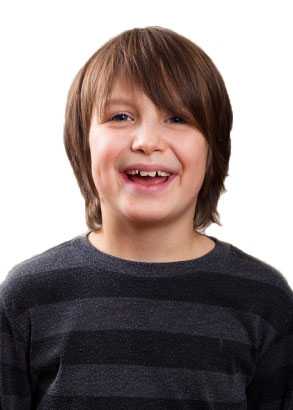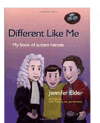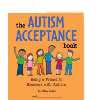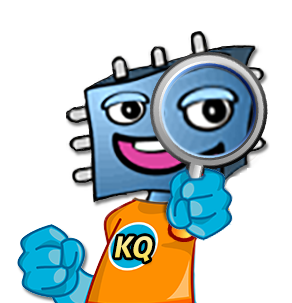What is autism and how do I recognize a kid who might be diagnosed as having an autism spectrum disorder?

What should you know?

Autism Spectrum Disorders (ASDs or Autism) are a group of developmental disabilities that can cause significant social, communication and behavioral challenges. CDC estimates that an average of 1 in 68 children in the U.S have an ASD or Autism. Let’s learn more…
Follow the 8 steps below for your Web Quest.
Step 1: See what you think about kids with autism. Take the Fact Checkup!
Step 2: Think about some questions to ask. Let’s see…
Step 3: Check out some quick facts.
Step 4: Check out some great websites to help you learn more.
Step 5: Find out about people who have been diagnosed with autism to help with your Quest.
Step 6: Learn about movies and books that can give you information.
Step 7: Check out your school and neighborhood.
Step 8: Now see if your attitudes have changed. Take the Fact Checkup again.
Let’s see…
What is autism spectrum disorder (ASD) or autism? What causes it? How common is it in kids like me? What are some of the symptoms?
Some things to think about….
- What is it like to have autism spectrum disorder (ASD)?
- What kind of help do kids who have autism need in school?
- Are there kids in the news that I have seen that have autism?
Can you think of more questions to help you in your Quest?
Click here to write them down so you’ll remember them as you move through this QUEST.
Quick Facts

Here are some facts that may help you answer some of your Web Quest questions. Remember, these facts will only give you basic information. You’ll need to search the Web further to find more in-depth information for your Quest.
CDC estimates that an average of 1 in 68 children in the U.S have an ASD.
Children with autism, like all children, are different in their behaviors and abilities. No two children with autism will have the same symptoms. A symptom may be easy to see in one child and hard to see in another child. Here are some examples of the types of problems and behaviors a child with autism may have:
- Problems being friendly. Children with autism may not make eye contact and may just want to be alone.
- Repeat words or phrases over and over (echolalia)
- Problems dealing with changes to their daily routines. Children with autism may repeat actions over and over again. They may want steady routines where things stay the same so they know what to expect.
- Flap their hands, rock their body, or spin in circles
- Have unusual reactions to the way things sound, smell, taste, look, or feel
World-Wide Web Search

KidsHealth Organization: Autism
This fun site has information about what autism is, what causes it, what doctors do, and how it is treated. Take a look and learn more about autism.
Facts about Autism
Learn facts about autism like the types of Autism Spectrum Disorders (ASDs), signs and symptoms; and how children are treated.
People
Learn about some kids who have autism. Learn how they are doing at school and at home.
Jason McElwain
View this CNN news video on Youtube.com where Jason talks about how he played basketball and made 6 three-point shots in the last few minutes of a basketball game. Jason has autism. Ask your parents or teachers if you can watch this video.
Movies and Books
Here are some books about Kids and people with autism or one of the types of autism called Asperger’s.

Blue Bottle Mystery: An Asperger’s Adventure
by Kathy Hoopmann
Jessica Kingsley Publishers; 1 edition (May 2001)
Reading Level: Ages 9-12
Nothing seems to be going right for Ben. Sometimes he has trouble understanding what his teachers are saying, and they get frustrated and yell at him. And because he sometimes acts strangely, he only has one friend, Andy. The boys are in a miserable mood, digging in the dirt in the schoolyard, when they unearth a mysterious blue bottle. The story is a gentle introduction to the challenges and unique qualities of people living with Asperger’s.

Different Like Me: My Book of Autism Heroes
by Jennifer Elder
Publisher: Jessica Kingsley Pub (November 30, 2005)
Reading Level: Ages 8 to 12 years
“Different Like Me is a book describing the lives of various people who found it difficult to fit into society. There are both famous and historical people who found it difficult to fit into society. There are both famous and historical people who all excelled in their chosen fields.

My Friend with Autism: A Coloring Book for Peers and Siblings
By Beverly Bishop
The author explains autism to young children in a tactful and relatable way, while the parent section helps grown-ups answer those tough questions. An excellent addition to any family library.

The Autism Acceptance Book: Being a Friend to Someone With Autism
by Ellen Sabin
Publisher: Watering Can Press; 1 edition (January 30, 2006)
Reading Level: Ages 9-12
The Autism Acceptance Book is an interactive, educational, and character-building book that introduces children to the challenges faced by people with autism while also supporting their personal journey toward appreciating and respecting people’s differences.
This book invites children to “walk in someone else’s shoes” as they learn to treat others the same ways they would like to be treated themselves.
My School and Neighborhood

Look around your school and neighborhood to see how many barriers need to be changed to help kids with autism to have the same opportunities to be friends and participate in activities just like kids without disabilities.
- Do you have any kids in your school who have autism? If so, see if you can invite them to visit your class. Try to be a friend and play with them on the playground.
- You can show that you support efforts to learn more about autism spectrum disorders (ASDs) by wearing a ribbon that represents this cause. Find out where you might get some ribbons for you and your classmates to display. Autism Awareness month is celebrated in April each year.
Links outside this website
We provide links to other web pages if you want to learn more about a topic. Some of these pages are on the CDC web site and others are on outside websites. Links to organizations and companies outside of CDC are included for information only. CDC has no control over the information at these sites. The views and opinions of these organizations are not necessarily those of CDC, the Department of Health and Human Services (HHS), or the U.S. Public Health Service (PHS).
- Page last reviewed: February 7, 2015
- Page last updated: February 7, 2015
- Content source:


 ShareCompartir
ShareCompartir